A visit to the Milwaukee Art Museum

The “time tunnel” between Calatrava and Saarinen
I’ll start by confessing that it’s been a long time since I’ve been to an art museum. This visit only came about because my friend Lino Santacruz extended me a remote invitation to visit the Museum of Art in Milwaukee, Wisconsin for the first time.
Wisconsin is a part of Lino’s and my friendship, so this journey meant more to me than just a visit to a museum.
The adventure started in Chicago. I drove the 50 miles from my house in an hour and 20 minutes.
Getting to Milwaukee was easy, and it was even easier to find the museum. Santiago Calatrava’s signature building can be seen from distance: an imposing bird made of steel and aluminum. Weather permitting – if the wind isn’t too strong – you can see the structure from morning to evening.
I’m no museum expert, much less an art expert. I was more interested in the Quadracci Pavilion – the “mother ship.”
I was surprised when I parked the car. There was no need to put on my coat, because the parking garage is heated.
Visitors can leave their coats in their cars and head in to the museum in the most comfortable way possible.
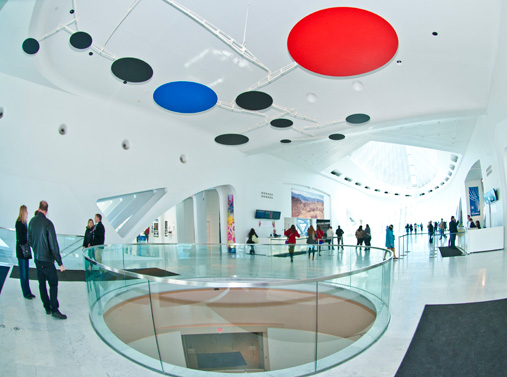
I entered the museum, ticket in hand, ready to start deciphering what the Spaniard Calatrava wanted to show in his work – the fusion of straight lines and curves.
My eyes were drawn to the ceiling. Transparent glass panels meld with straight lines that compel the viewer to look where the shape meet. It’s even more enjoyable on a sunny day, when visitors can also look for shapes in the clouds.
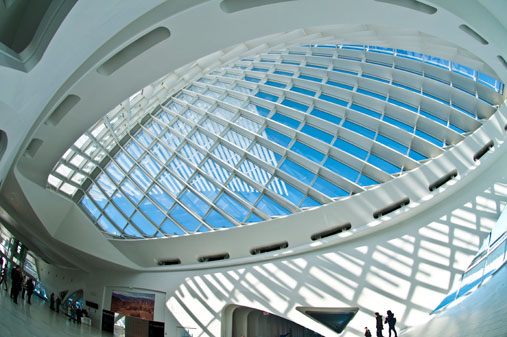
Satisfied with my visit to the Quadracci Pavilion, I headed to the War Memorial Center, designed by the Finnish-American architect and designer Eero Saarinen. This is where the museum’s 30,000 works of art are stored. The building was erected in honor of the soldiers who fought in World War II.
To get there, you go down a long corridor illuminated by the reflection of the water from Lake Michigan.
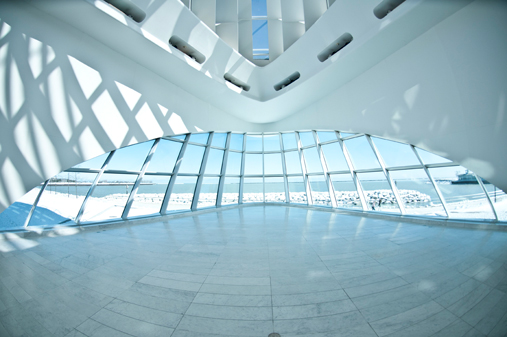
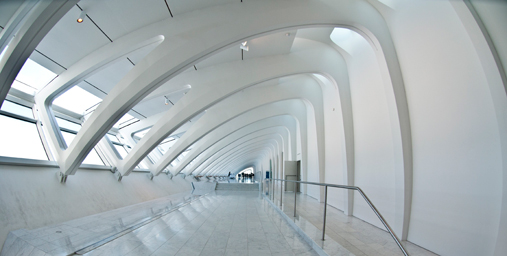
On the way, there is an auditorium and small shop where you can buy souvenirs. This is the connection between old and new. The War Memorial Center was built in 1955 and the Quadracci Pavilion in 2001.
You immediately feel a disconnect. The War Memorial Center has a lot of concrete and is gray, the Quadracci has more glass and steel and is predominantly white.

The route past the artworks flowed quickly, because the rooms are small and the art is easy to look at in passing. Or maybe I had that feeling because I was thinking I should finish up and go see the museum from outside.
The cold and snow weren’t a problem. From Prospect Street you can take good photographs of the main entrance. You reach it by crossing a bridge that hangs from a mast, supported by thick steel cables.
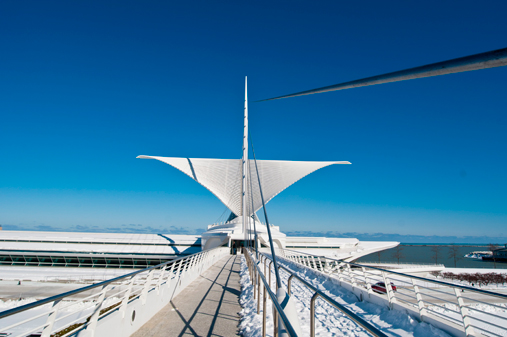
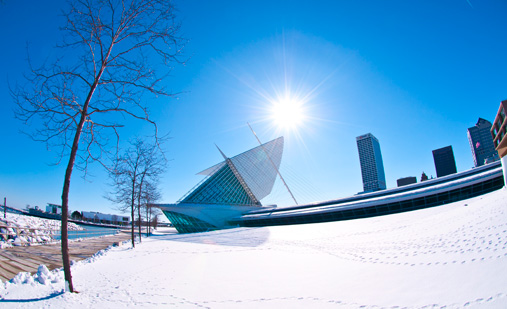
All angles of the museum are photogenic. Because I visited in winter, the “bird” is resting in snow on the lakefront.
A visit to the Milwaukee Art Museum unites two architectural eras. The two wonderful works blend together, connected by the bridge. It’s like an “architectural time tunnel.”
Javier Quiroz is a photographer and reporter. He began his career 25 years ago in his native Nuevo Laredo, Tamaulipas, Mexico. He currently works and lives in Chicago, USA.


